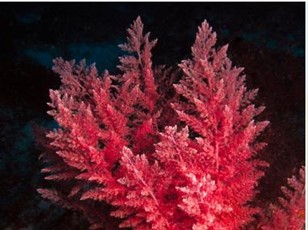
Dr Maree Fudge
Questions answered by this expert
Climate change has many different parts to it and scientists have come up with lots of very promising ways to slow down global warming. Here is one super interesting solution that comes from the oceans.
Have you ever thought about seaweed? It isn’t just smelly stuff that builds up on some beaches, it’s an amazing marine plant that can help us tackle global warming! Seaweeds are plant-like organisms, which mostly live attached to rock in coastal areas. There are many different kinds of seaweeds, from fine delicate red seaweeds (phylum Rhodophyta) like asparagopsis , delicious and nutritious green seaweeds (phylum Chlorophyta) like ulva (which is also known as sea lettuce) to brown seaweeds (phylum Ochrophyta), like kelp. They also range in size from microalgae through the huge bull kelp macroalgaes.
Humans have been eating and using seaweeds for a very long time. Seaweed was a staple food in Japan, Korea and China since at least 600BC. The Icelandic sagas, written in the 10th century, also refer to dulse, a type of red seaweed, as a food. Special seaweed molecules call polysaccharides from red and brown algae are used in all sorts of human foods to help ingredients combine (emulsify) and as a thickener. These are even used in ice cream and toothpaste – next time you clean your teeth check the ingredient list for carrageenan – that’s derived from seaweeds.
But what about as a solution for climate change? To understand seaweed as a solution for climate change, we need to think about cow farts. Seriously, cows release a huge amount of methane into the atmosphere. Methane is one of the main greenhouse gases responsible for global warming and climate change. Cows produce a lot of methane. Just 1 cow can produce up to 120kg of methane in its lifetime, and there are about 1.5 billion cattle world word – that is a lot of cow farts.
Scientists at the CSIRO have worked out that just a small amount of dried asparagopsis (a red seaweed) fed to cattle can reduce their methane output by as much as 80%. Scientists have been working on this for a long time, but it is showing huge promise for stopping one source of methane getting into the atmosphere.
So the science is in and now companies are starting to invest in farming asparagopsis, and making feed additives for cattle.










